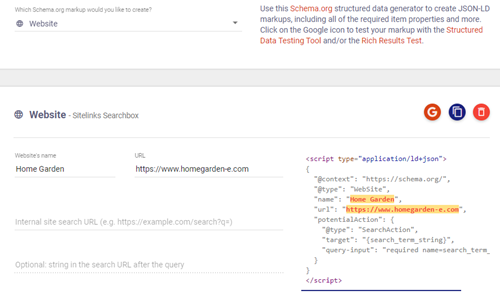The Main Principles Of Schema Markup Service
Table of ContentsSchema Markup Service Fundamentals ExplainedThe Basic Principles Of Schema Markup Service The smart Trick of Schema Markup Service That Nobody is Talking AboutSchema Markup Service - The FactsMore About Schema Markup Service
You can utilize CSS selectors depending on exactly how you structure your website. In the Write-up Kind field, you have accessibility to 3 alternatives.The Post and Article types can be used interchangeably, yet the News Short article must only be made use of for factual news content. If your blog post is regarding books of any kind, you should make use of the Publication Rich Bit type. When you pick Book, below are the alternatives that you must see.
The Headline alternative is where the headline of guide ought to be. Usually, it will be the title of guide. Ranking Math is set up to automatically load this alternative with the title of the page utilizing This option allows you configure where the Schema for the publication type will be displayed on the web page.

Not known Factual Statements About Schema Markup Service
The URL choice mentions the actual link of the book. This is another required area, so ensure to load it out below or leave it with the blog post URL. As you probably thought, the Author Name area ought to include the name of the author of guide. Ranking Math draws in the name of the article author as the default setup utilizing the variable %name%, and you may need to change it.

: If the title of the specific edition is different from the original, include it here.: Get in which edition the book is in: Enter the ISBN of the book right here: Go into the Link certain to this version: Get in the name of the author below: Get in the first released date of this version: Select which layout the publication is in Because a publication can have numerous layouts, you can add more home groups to a single Book Schema and include the information of those.
The Buzz on Schema Markup Service
Here are all the options that you would see if you select the Course Rich Snippet. Below is exactly how you configure the Training course Schema type.
As per Google's guidelines, evaluation information for Schema read the article ought to be noticeable on the web page. This option lets you set up where the details ought to be see post included. You can likewise choose a custom place by picking the Shortcode alternative. If you chose the shortcode choice in the setup above, you should paste the shortcode from this area into your post where you want the testimonial to be shown.
If the training course is by a private, pick that option. If an organization has developed the course, select that option.
Schema Markup Service for Beginners
Get in the URL where the course is readily available. Select the setting with which the program will be supplied. You can pick between Online, Onsite, and Blended. Get in the total time to complete the course, including its assignments and exams. Get in the time in ISO 8601 day and time style, for example, PT22H.
If the Repeat Frequency is set to Weekly, and the Repeat Count is 6, after that the program will run every week for six weeks. Select exactly how often the training course will certainly be duplicated.
Go into the end date of the course in ISO 8601 day and time format - schema markup service. Go into the pricing classification of the program. Get in the cost price of the course using numbers, for example, 99 if the program costs $99.
7 Easy Facts About Schema Markup Service Explained
dollar.: The actual rating you desire to offer to the course: The minimal rating allowed under your rating methodology: The maximum rating permitted under your rating technique Get in the positives or benefits of the training course, one per line. Go into the downsides of the course, if any, one per line.
You might just talk about the data and even draw final thoughts from itthe Schema applies in both cases. You can learn extra concerning the Schema kind below. Here are the fields you will certainly require to configure in the Schema. Here you will call the dataset or point out the name of the existing dataset.